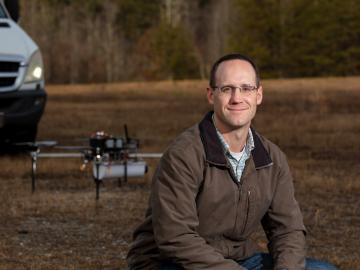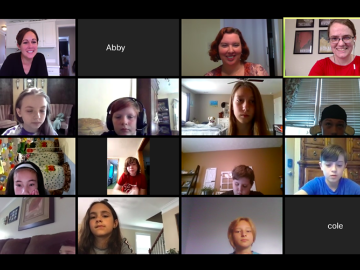
Filter News
Area of Research
- (-) Advanced Manufacturing (4)
- (-) National Security (52)
- (-) Supercomputing (54)
- Biology and Environment (43)
- Biology and Soft Matter (1)
- Computational Biology (1)
- Computer Science (3)
- Energy Science (78)
- Fuel Cycle Science and Technology (1)
- Fusion and Fission (5)
- Isotopes (2)
- Materials (77)
- Materials for Computing (9)
- Neutron Science (98)
- Nuclear Science and Technology (6)
- Quantum information Science (1)
News Type
News Topics
- (-) Cybersecurity (21)
- (-) Energy Storage (6)
- (-) Machine Learning (23)
- (-) National Security (35)
- (-) Neutron Science (17)
- (-) Physics (9)
- 3-D Printing/Advanced Manufacturing (15)
- Advanced Reactors (1)
- Artificial Intelligence (44)
- Big Data (19)
- Bioenergy (11)
- Biology (13)
- Biomedical (12)
- Biotechnology (3)
- Buildings (3)
- Chemical Sciences (4)
- Computer Science (85)
- Coronavirus (13)
- Environment (21)
- Exascale Computing (23)
- Frontier (29)
- Fusion (1)
- Grid (8)
- High-Performance Computing (38)
- Isotopes (2)
- Materials (15)
- Materials Science (16)
- Mathematics (2)
- Microscopy (7)
- Molten Salt (1)
- Nanotechnology (10)
- Nuclear Energy (6)
- Partnerships (5)
- Quantum Computing (16)
- Quantum Science (22)
- Security (14)
- Simulation (13)
- Software (1)
- Space Exploration (2)
- Summit (36)
- Transportation (6)
Media Contacts

A multi-institutional team, led by a group of investigators at Oak Ridge National Laboratory, has been studying various SARS-CoV-2 protein targets, including the virus’s main protease. The feat has earned the team a finalist nomination for the Association of Computing Machinery, or ACM, Gordon Bell Special Prize for High Performance Computing-Based COVID-19 Research.

Oak Ridge National Laboratory researchers have developed artificial intelligence software for powder bed 3D printers that assesses the quality of parts in real time, without the need for expensive characterization equipment.

Horizon31, LLC has exclusively licensed a novel communication system that allows users to reliably operate unmanned vehicles such as drones from anywhere in the world using only an internet connection.

From materials science and earth system modeling to quantum information science and cybersecurity, experts in many fields run simulations and conduct experiments to collect the abundance of data necessary for scientific progress.

Five researchers at the Department of Energy’s Oak Ridge National Laboratory have been named ORNL Corporate Fellows in recognition of significant career accomplishments and continued leadership in their scientific fields.

Scientists at ORNL used neutron scattering and supercomputing to better understand how an organic solvent and water work together to break down plant biomass, creating a pathway to significantly improve the production of renewable

A team of researchers has performed the first room-temperature X-ray measurements on the SARS-CoV-2 main protease — the enzyme that enables the virus to reproduce.

Research by an international team led by Duke University and the Department of Energy’s Oak Ridge National Laboratory scientists could speed the way to safer rechargeable batteries for consumer electronics such as laptops and cellphones.

With Tennessee schools online for the rest of the school year, researchers at ORNL are making remote learning more engaging by “Zooming” into virtual classrooms to tell students about their science and their work at a national laboratory.

In the race to identify solutions to the COVID-19 pandemic, researchers at the Department of Energy’s Oak Ridge National Laboratory are joining the fight by applying expertise in computational science, advanced manufacturing, data science and neutron science.


